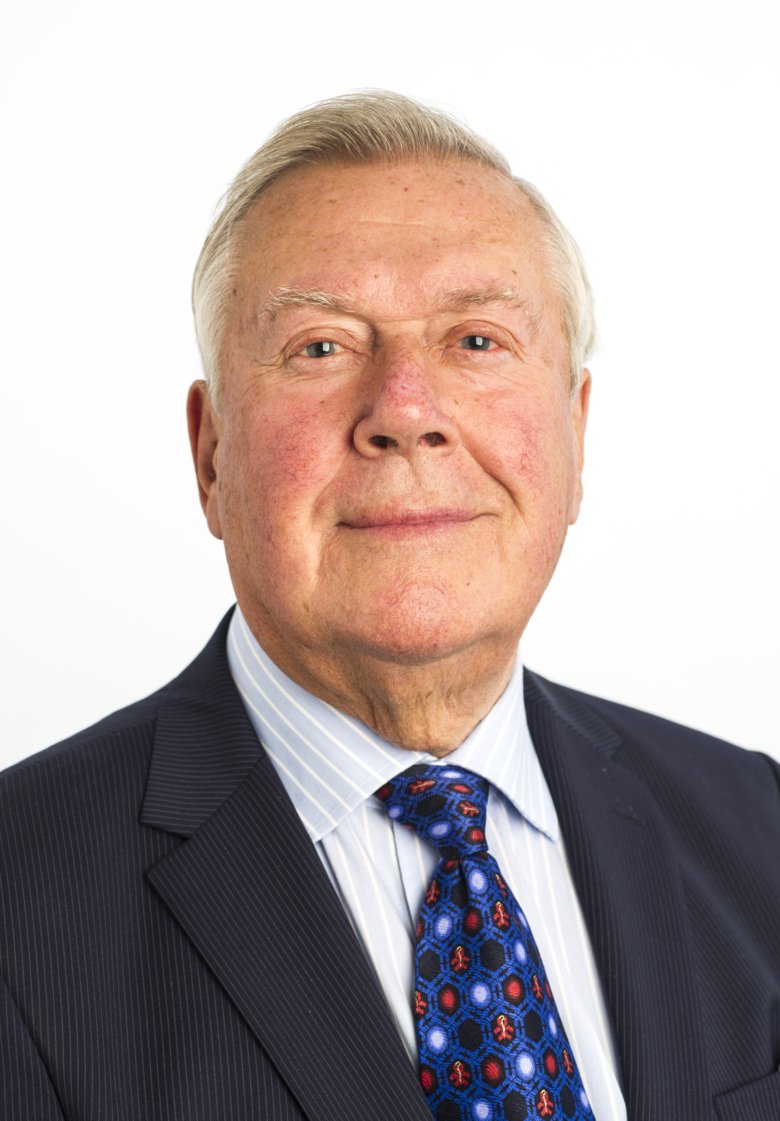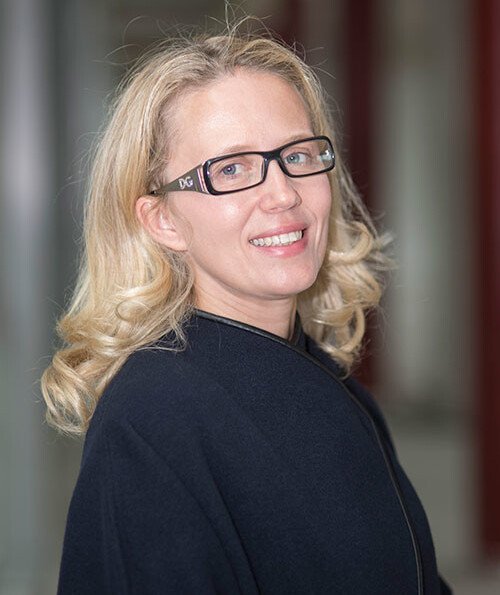Two professors who followed different paths
Professor Emeritus Folke Sjöqvist and newly appointed Professor Nagihan Bostanci followed different paths to Karolinska Institutet. One became a professor within a brand new research field and the other changed countries when she was appointed professor at Karolinska Institutet.
Text: Ann Patmalnieks
First published in the staff magazine KI Bladet no 5, 2016
(Editors note: Folke Sjöquist passed away on March 30, 2020)

One professor – one building
Professor emeritus Folke Sjöqvist built up the Department of Clinical Pharmacology from scratch. He feels that KI should return to having a single subject representative.
When Folke Sjöqvist was appointed professor, KI was still run in such a way that people spoke about “one professor – one building”.
– I didn’t have a building but I did have an entire floor at Huddinge. And there was no doubt about who had responsibility for clinical pharmacology.
It was in the wake of the Thalidomide scandal that it was decided to create a professorship in clinical pharmacology at Karolinska Institutet. Folke Sjöqvist was already an expert and committed to the subject.
It was obvious that drugs and their side-effects were not being sufficiently investigated, he says.
– Side-effects occurred from for example psychopharmacological drugs. You could suffer a cerebral haemorrhage from eating cheese that contained tyramine while taking MAO inhibitors against depression, Folke Sjöqvist tells us when we meet him at home.
A substantial American grant
Following his doctoral studies at the Department of Clinical Pharmacology at KI, Folke Sjöqvist PhD continued at what he calls “biochemical pharmacology’s Mecca”, the National Institute of Health in Bethesda.
On returning to Sweden, a substantial American grant allowed him to set up a unit for clinical research in pharmacology at KI. When the first professorship was announced at Linköping in 1970, he applied for and was awarded the position. A mere two years latter he was appointed professor at KI.
At Linköping he had built up the first academic department of clinical pharmacology. Now he would do the same thing at KI.
– I built everything up from scratch. I’d spent two years in the USA and had lots of ideas that I wanted to test here in Sweden where we had better-organised healthcare.
– The research concerned drug metabolism with an emphasis on variations between individuals in how drugs are broken down. Together with the Psychiatric Clinic at KS we investigated how the same dosage for different people gave different concentrations in the bloodstream. This was a breakthrough in pharmacogenetics that then permeated all the department’s research.
Imporant to stay up to date
As professor he saw himself mainly as a representative of KI and then of his field and his department, and only thirdly of himself as a researcher.
– My cardinal rule was to devote two thirds of my time to teaching and research and the remaining third to the clinic. It was also important to stay up to date on the administrative side, to be actively involved in the Professors' Collegium and KI’s decision-making bodies.
Teaching has always been close to his heart.
– I am very critical of those who neglect their teaching and a strong opponent of avoiding basic training courses. To be able to recruit people to research education, you have to be involved already at that stage.
Today he has handed over the research to his successors. But he remains active in various networks, not least on the international front.
– The experience that professors emeritus have is not exploited well enough at KI. Foreign universities are much better at it, he says.
Folke Sjöqvist follows everything that happens at KI very closely and has some things to say about its present structures. He would like KI to reintroduce subject representatives and is sceptical to some subjects being spread over several departments.
– You have to know who is responsible for a subject. It’s not a good idea to divide it into research teams; that paves the way for egocentrism and insufficent interest in the whole. Subject representatives need to be appointed and they must be professors.
A team leader who switched countries

Newly inaugurated professor Nagihan Bostanci sees herself as a team leader whose aim is to improve dental health and thereby help everyone feel better.
She didn’t hesitate to switch countries and come to work at Karolinska Institutet.
Nagihan Bostanci reacted speedily when she saw the advertisement for the position of Professor of Inflammation Research specialising in Periodontics.
– Oh my god, periodontics never stops fascinating me. They were looking for someone who was willing to build bridges between research and clinical practice. The description of the position fitted everything I had done and wanted to do, my history and my future, Nagihan Bostanci says.
The fact that the position was at KI was important to her.
– KI is one of the most research-oriented universities in Europe and internationally its dentist education is among the top three. KI also has a structure of intra-disciplinary collaboration and I want to work like that. I can work and grow as a person at KI. It wasn’t difficult to say yes.
Doctoral degree in periodontics
Nagihan Bostanci took her doctoral degree in periodontics at the University of London and holds a degree in dentistry from Ege University in Turkey. Her last post before coming to KU was as Principal Investigator at The Center of Dental Medicine of the University of Zürich in Switzerland. During her time there she was appointed Associate Professor of Periodontics and led her own research team.
Last summer she moved from Zürich to Stockholm.
At the same time a poisition was advertised that suited her husband Georgios Belibasakis, who also works at the Department of Dental Medicine.
Nagihan Bostanci will be further developing the research she worked with previously on how gum inflammation occurs and progresses.
– Unfortunately it’s a silent inflammation that does not cause the patient any problems until the tooth has come loose. We’re trying to solve how this can be detected earlier. At the moment we’re looking at what saliva and the bacteria and proteins it contains can tell us. Because saliva can act as a “mirror” of our bodies, research can also give knowledge about systemic diseases.
Involved in education
In her role as professor, she will also be involved in education. She will teach doctoral students in their third year who are writing their theses.
– I guide them to the research, that might be laboratory- or register-based or build on clinical studies. It provides good opportunities for collaboration with my colleagues in clinical practice.
As a professor you have to both move the research forward and disseminate the knowledge to education, she feels.
Another part of her work is the administrative duties, such as for example acting as course coordinator, applying for research funding and sitting on boards and project committees.
– It is important to be involved in education and strategic research thrusts.
Colleagues, teams and structures that provide support
Nagihan Bostanci emphasises that it is important to have colleagues, teams and structures that provide support.
– You need complementary expertise. You can’t be good at everything. I can be a bridge. Leadership today is to a great extent a matter of communication skills.
Would she, then, be able to attain her goals without holding a professorship? Nagihan Bostanci answers:
– The professor has the highest rank. It’s part of one’s development process. When you get that far, you’ve come part of the way to attaining your goal. But at the same time you have greater responsibility to set an example and be a point of reference for others and to be that you have to work hard. The title is a recognition of what you have done but also a reminder of your commitment to your branch of science.
